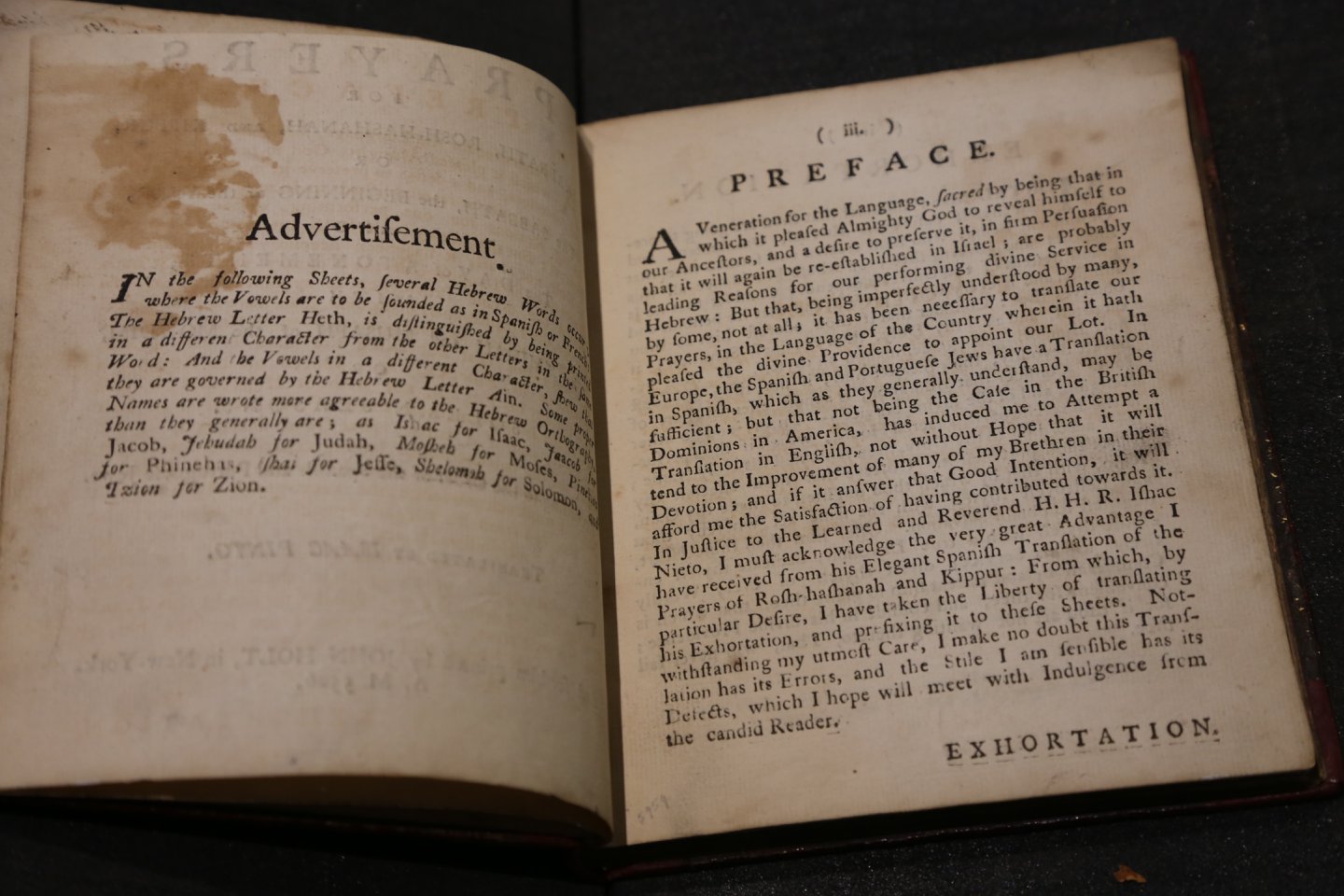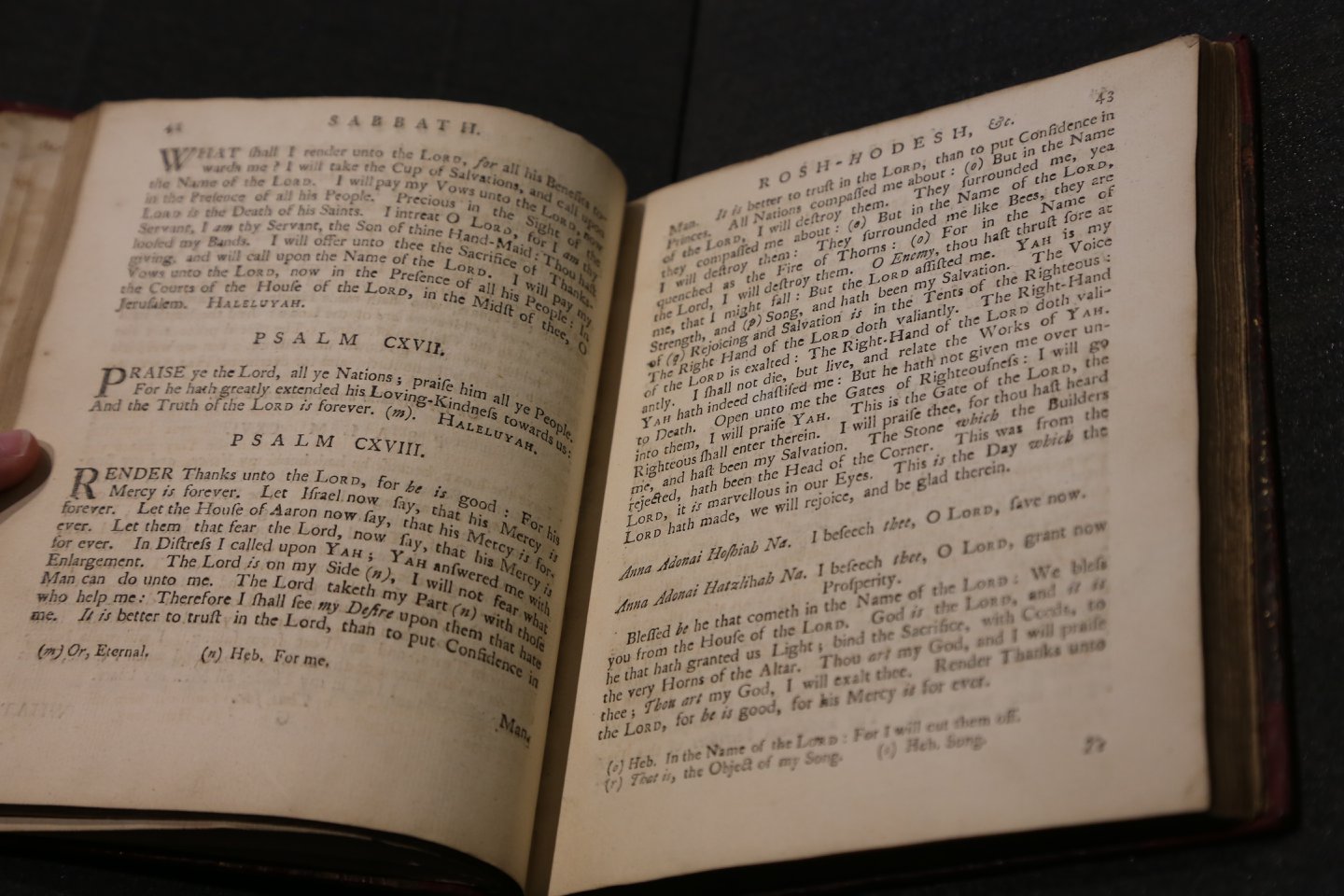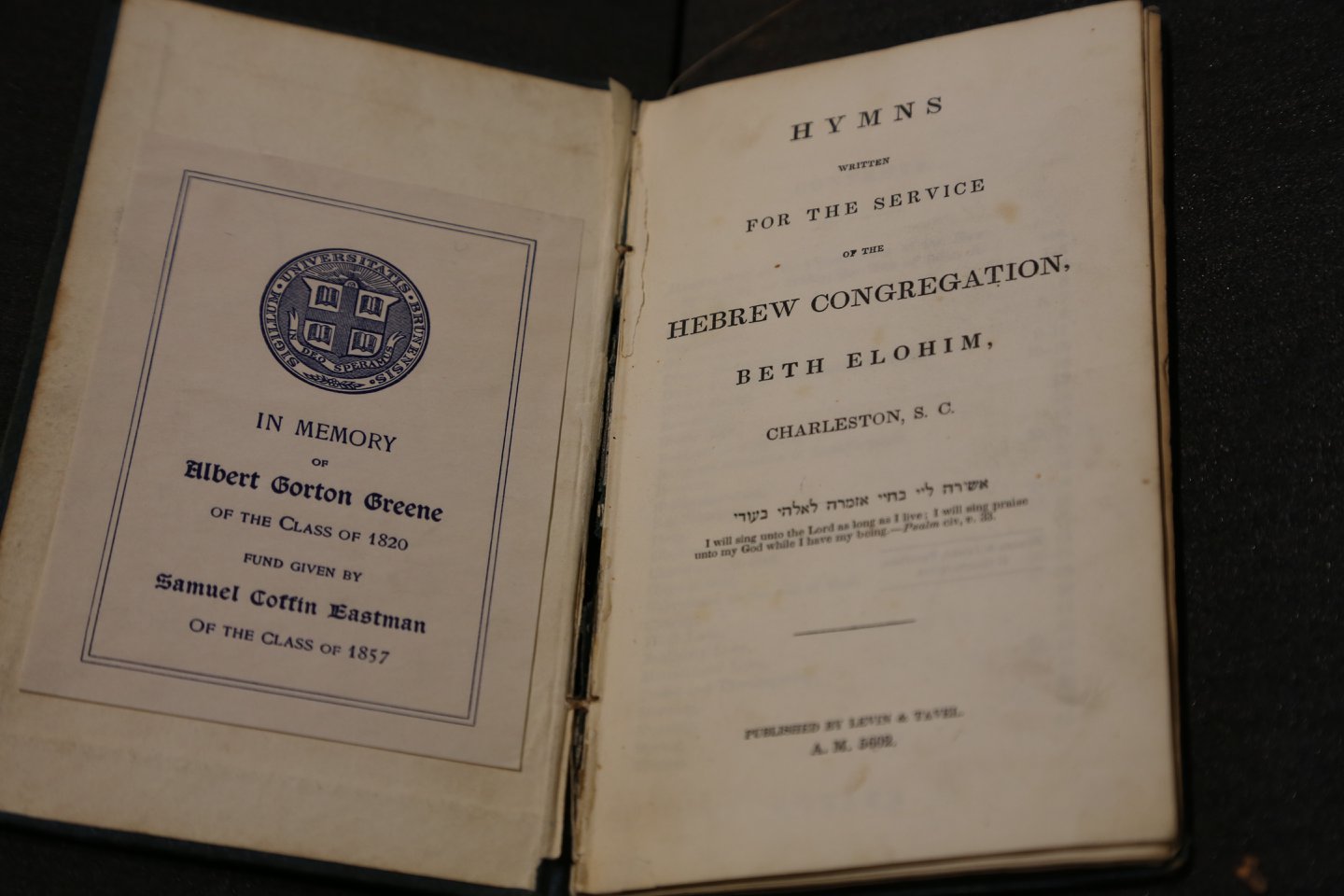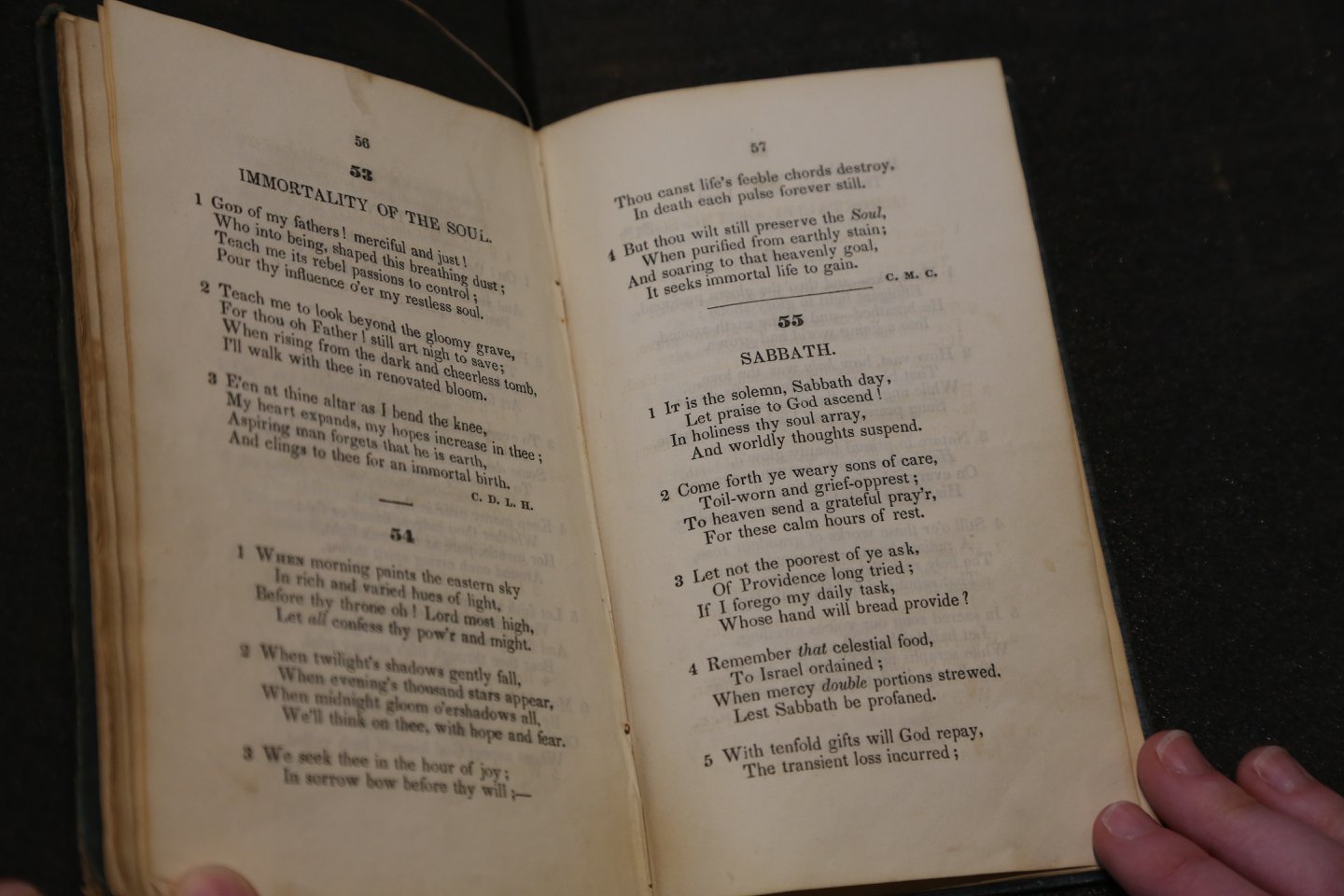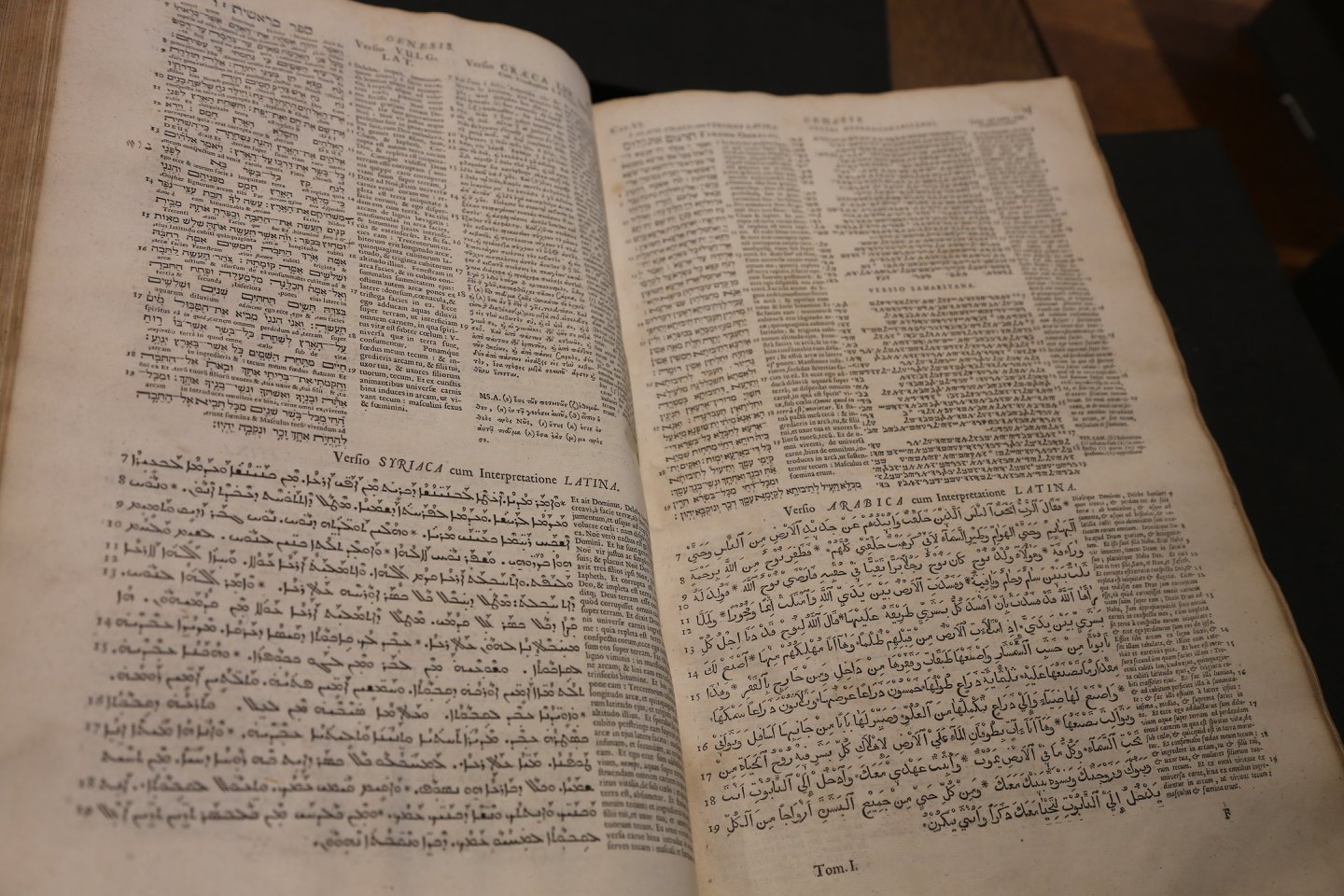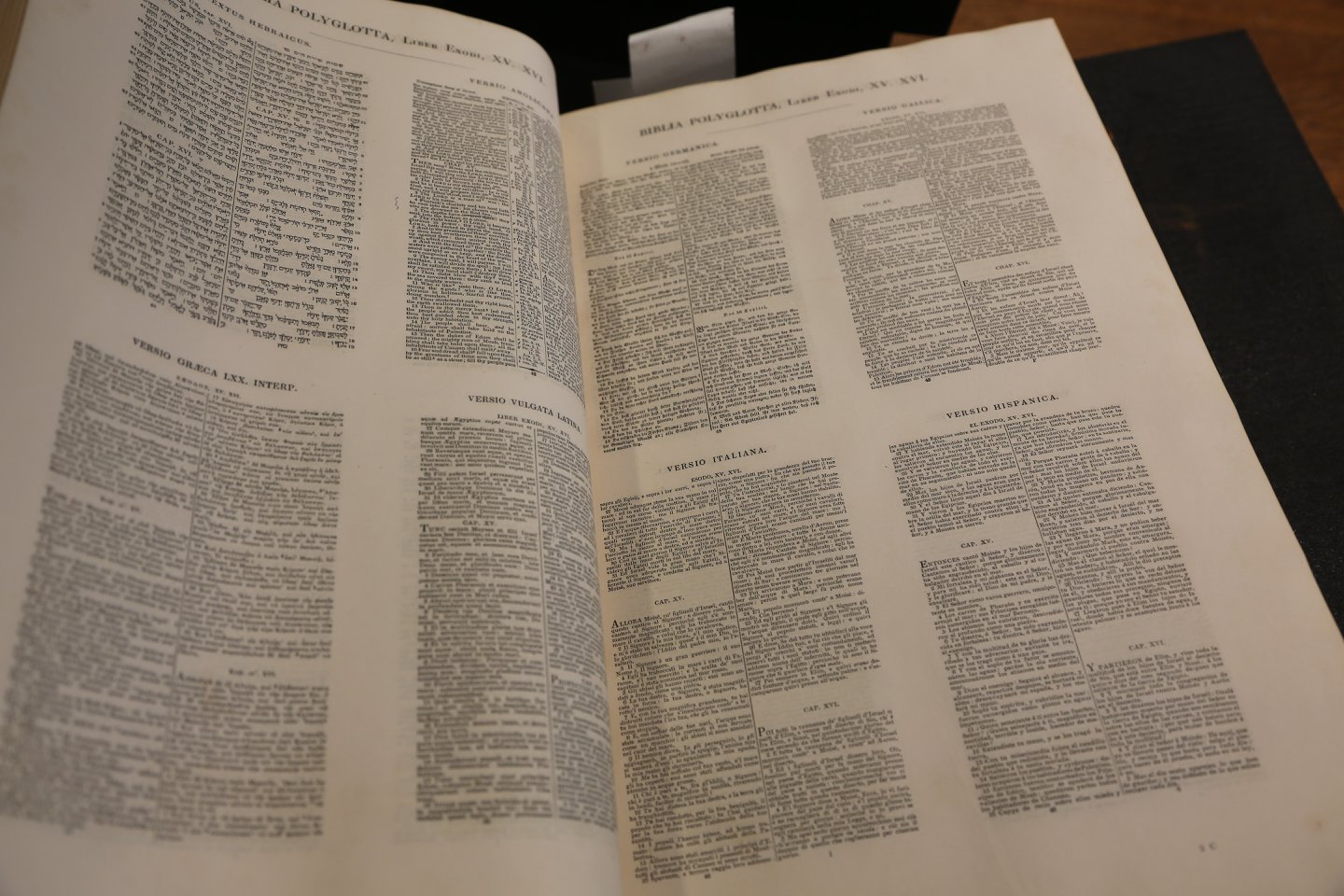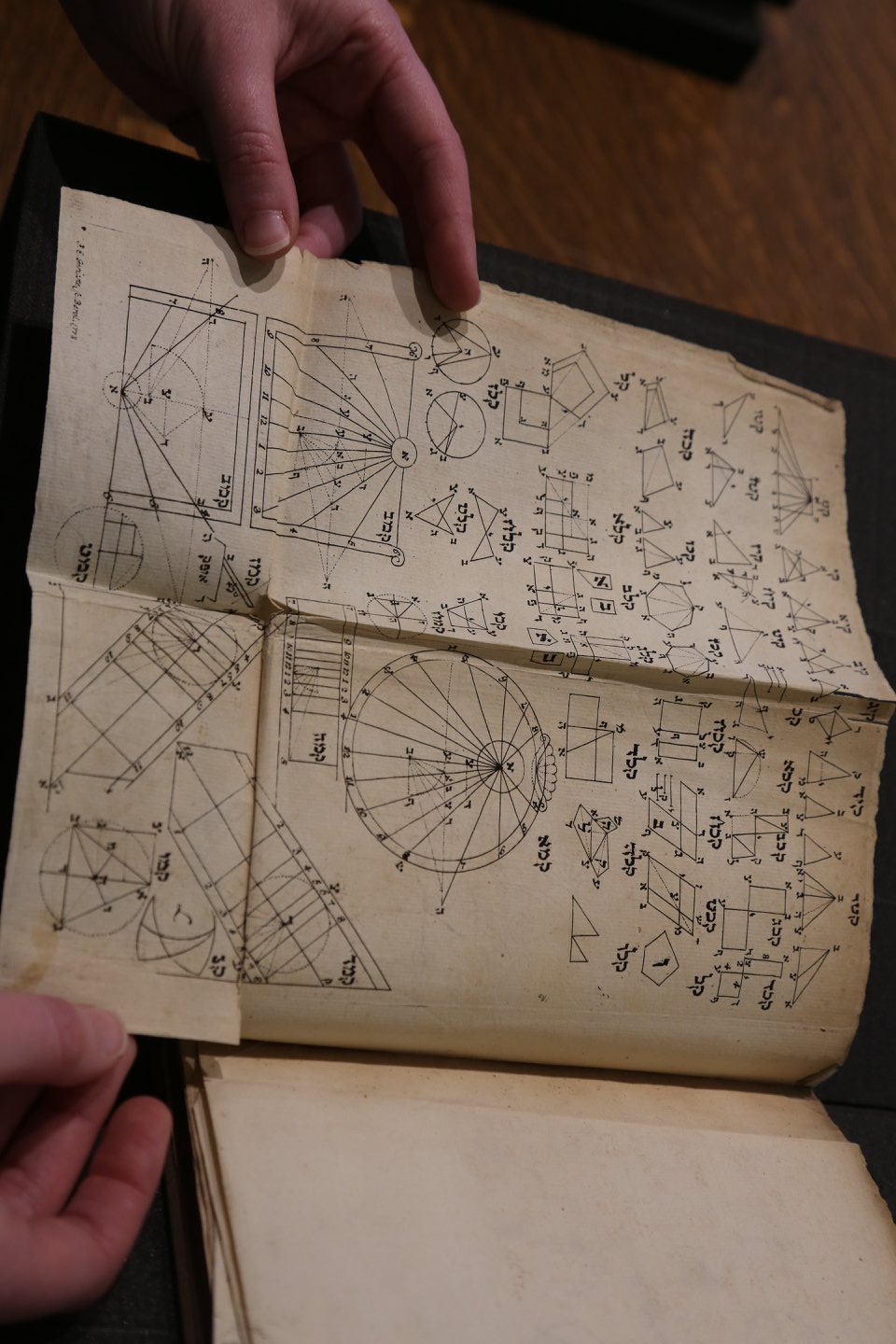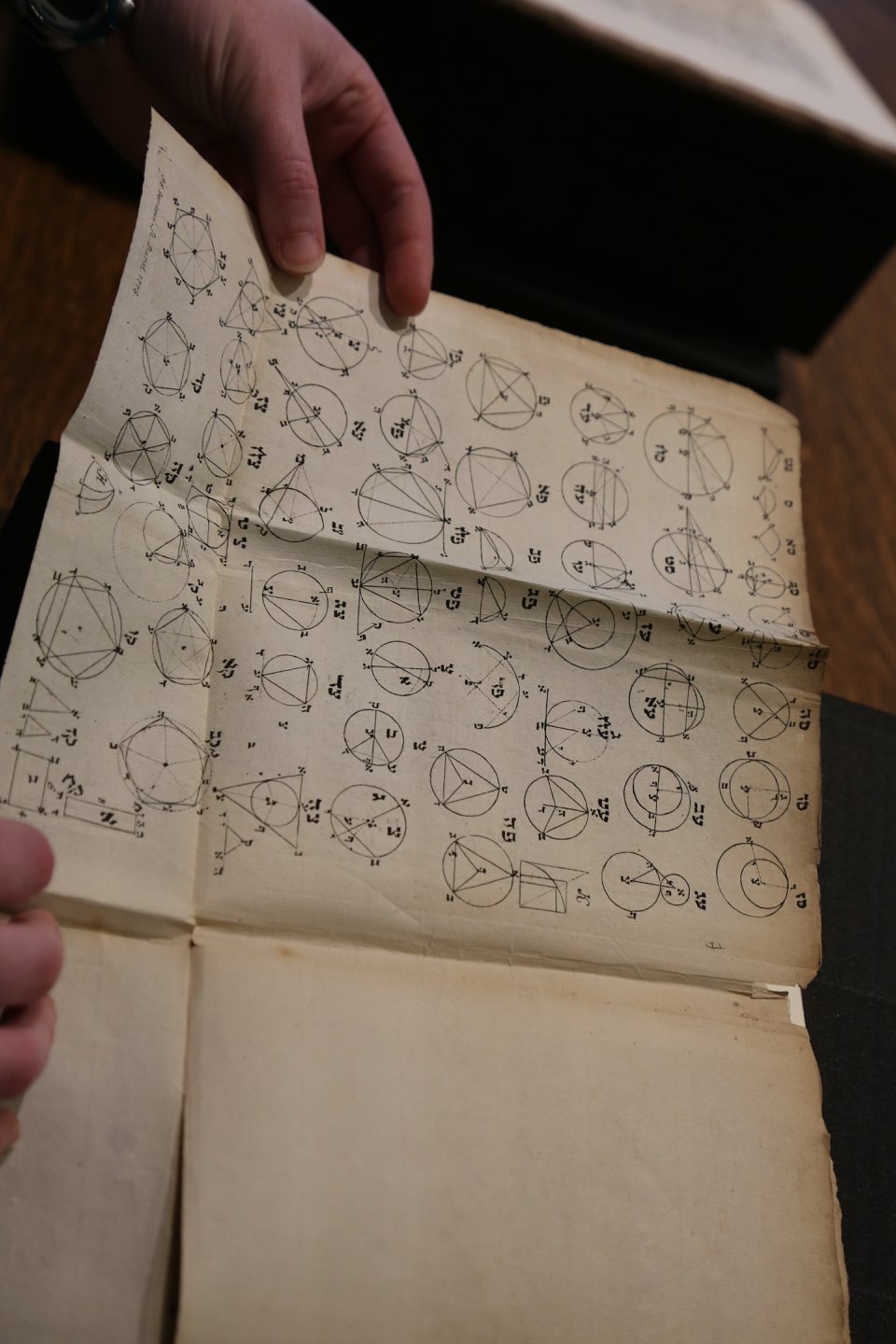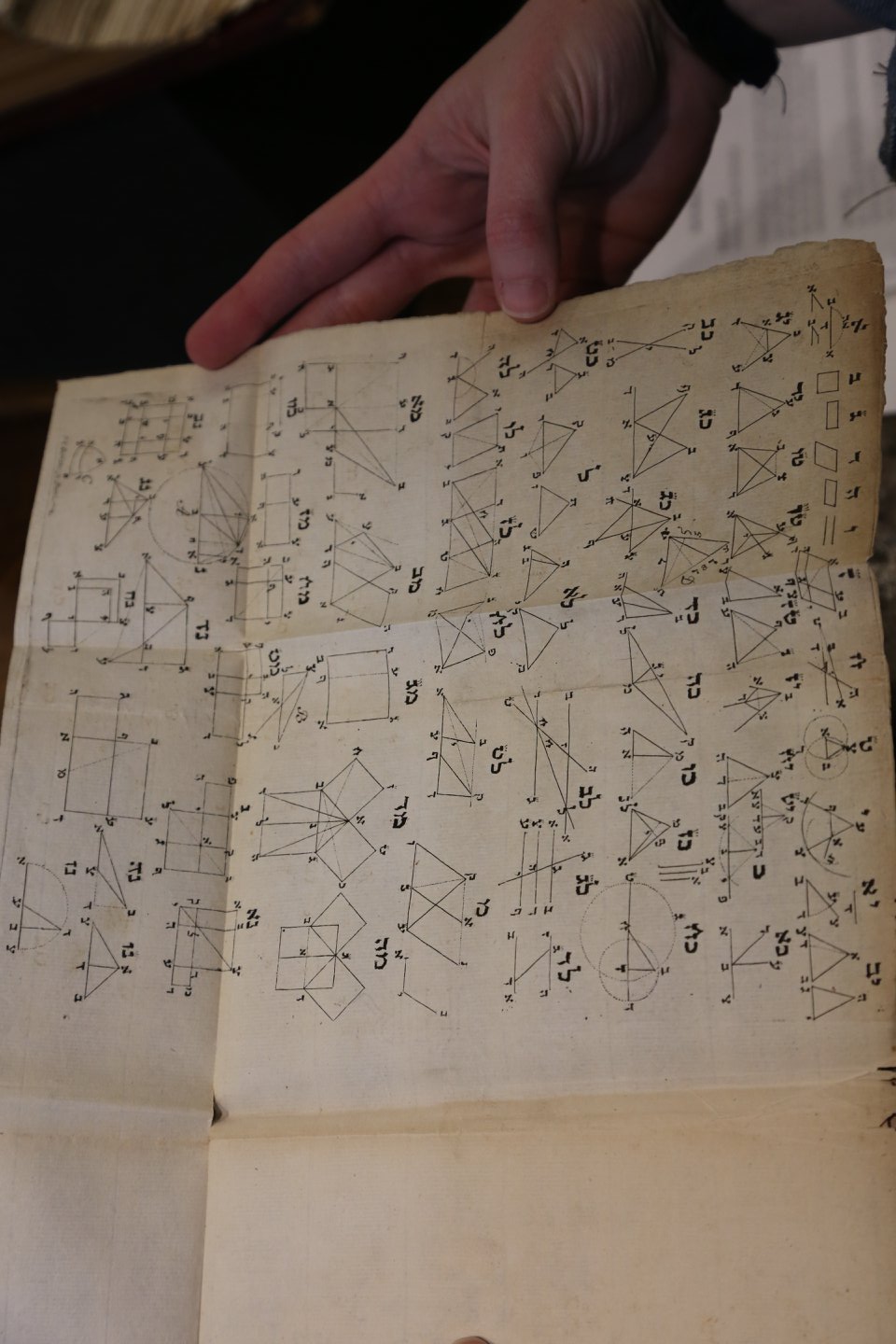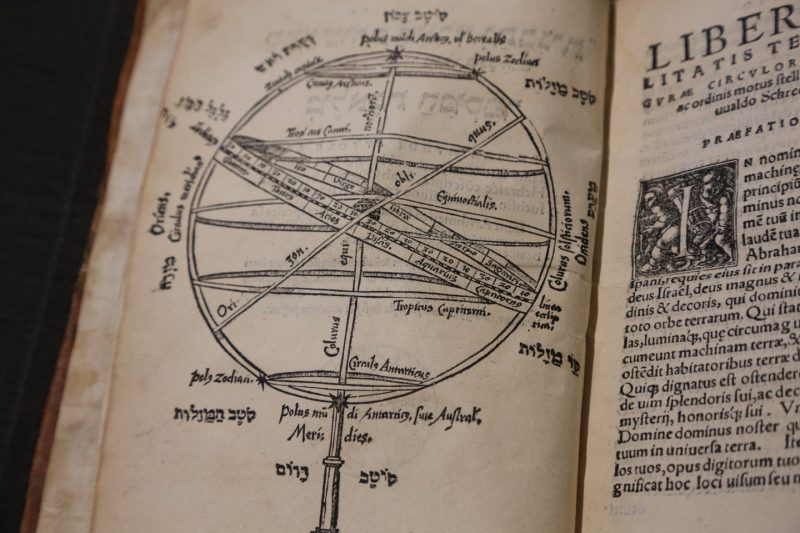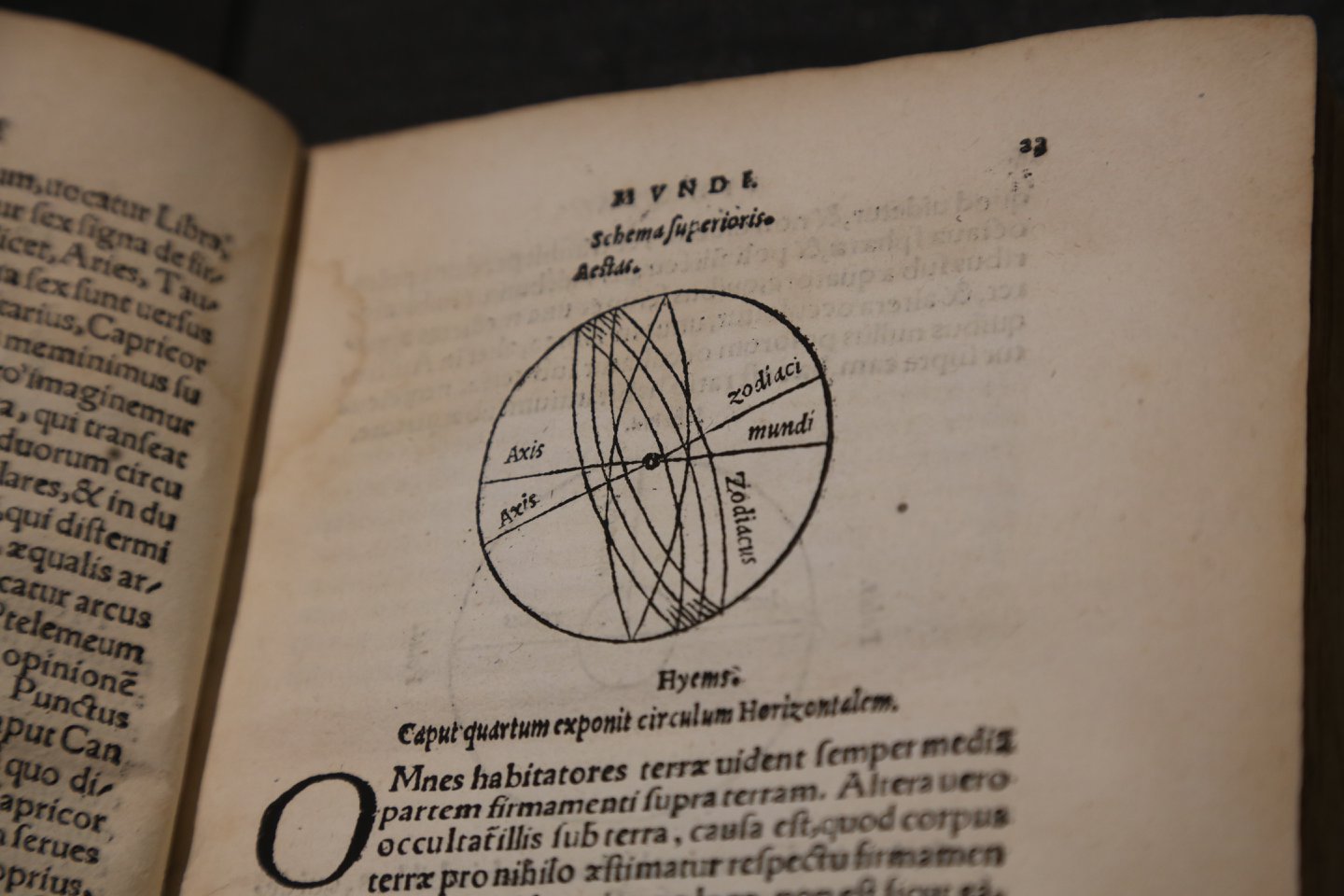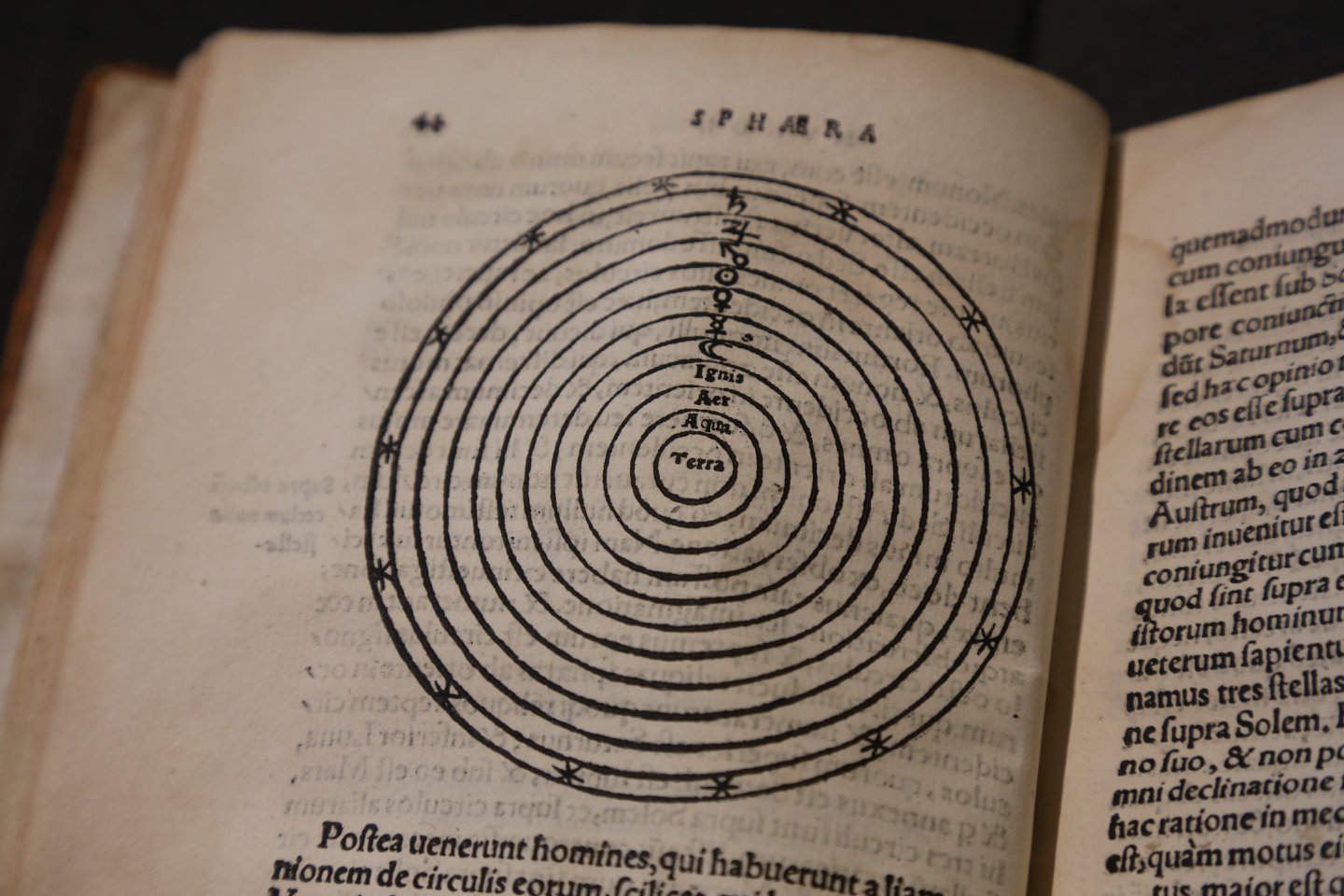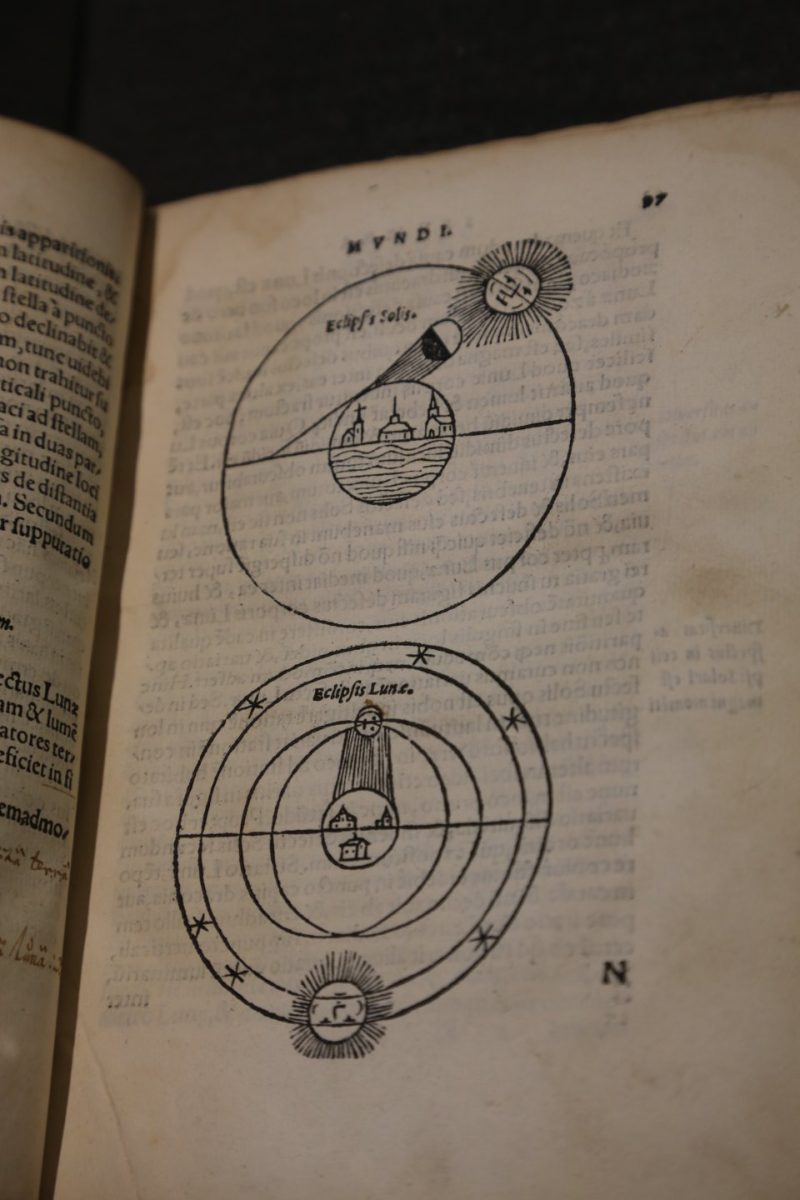
Around 20 students, faculty, and guests visited the Hay on March 15 for Haggadot at the Hay, a short tour of the ongoing Ungerleider Collection of Haggadot and a show-and-tell with curated Judaica housed at the Hay. Below are some of the items featured during the event.
Sephardic Siddurim: Early Jewish Presence in North America
After the Inquisition, many Portuguese and Spanish Jews fled to South America, settling in Brazil before immigrating along the Atlantic to the newly settled English colonies. Thus, Sephardic (of the Hebrew Sepharad, meaning “Jews of Spain”) Jews constituted the first major Jewish communities in North America, a presence evident in the preserved texts and even contemporary liturgy available today.
Pinto Siddur
Published: 1765, New York
The Pinto Siddur is the first Jewish prayer book printed in North America. It contains the daily and Shabbat liturgy, as well as Minhag (prayer order) specifically for Rosh Hashanah and Yom Kippur. Though the text draws on and translates the traditions of Portuguese and Spanish Jews who had immigrated from Brazil to the English colonies, it largely resembles present-day liturgy. Translated and prefaced by Isaac Pinto, the volume was conceived with “Hope that it will tend to the Improvement of many of my Brethren in their Devotion.”
The final leaf includes an inscription:
“Mary Ann Hallett Wife of James Hallett; Light is the Shadow of God, Truth is his substance. God is just. God so Loved the World that he gave(?) his only begotten for the End that all that believe in him should not Perish but have Everlasting Life.”
Hymns written for the service of the Hebrew Congregation Beth Elohim
Published: 1842, Charleston, South Carolina
Hymns written for the dedication of the Sephardi synagogue Beth Elohim in Charleston, South Carolina. Founded in 1749, Kahal Kodesh Beth Elohim is one of the oldest Jewish congregations in the United States and is an operational synagogue in Charleston today. Before 1830, the synagogue followed Spanish and Portuguese Jewish liturgical traditions before adopting European Reform traditions and publishing the first Reform siddur (prayer book) in America.
Seder tefiloth
Published: 1658, Amsterdam
Seder tefiloth, literally meaning order of prayers, is a Jewish prayer book including the daily, Sabbath, and festival order of prayers according to the Sephardic Rite. Printed at the Yosef Elias Press in Amsterdam, the volume is bound in tortoise shell – Sephardi merchants played a large role in the tortoise shell trade from the Caribbean.
Further Recommendations
Sephardic-American Voices: Two Hundred Years of a Literary Legacy is an anthology of Sephardic American poets, essayists, and short story writers available at the John Hay Library.
Hebrew and Jewish Texts in Europe
Biblioteca Espanola
Published: 1781, Madrid
Per the volume’s “Prologue”: A history of the literature of Spanish rabbinic writers beginning in the 11th century, including commentaries and essays on the Talmud, philosophy, law, medicine, and other major topical areas. The included writers were considered the premiere, most important members of their society, as they were the most learned and partook in noble studies. The writers are organized chronologically, then followed by writers of una edad incierta (an uncertain age), meaning of an unknown time period beginning on page 613.
Curiously, this volume was compiled and published nearly three hundred years after the expulsion of Jews from Spain during the Inquisition. The implication of the publication, therefore, is some long-standing interest in documenting the religious and philosophical history of Spain, most likely through a Catholic lens.
Polyglot Bibles
A polyglot Bible an edition of the Bible in which multiple translations of the text in various languages (often English, Hebrew, Latin, German, and Italian) are arranged in parallel columns. The design was incredibly complicated to arrange in printing presses, but it allows scholars to compare ancient and modern versions. Among the most comprehensive is the London Polyglot, compiled by Brian Walton, which assembled six volumes in nine languages: Hebrew, Samaritan, Aramaic, Greek, Latin, Ethiopic, Syriac, Arabic, and Persian.
Biblia Sacra Polyglotta – Walton’s Polyglot
Published: 1657, London
Biblia Sacra Polyglotta
Published: 1831, London
Hebrew and the History of Science: Early-Modern Hebrew Astronomical and Mathematical Texts
Sefr Uklidos
Published: 1780, Amsterdam
One of the few early modern Hebrew books of mathematics, Sefr Uklidos is a Hebrew translation of Euclid’s Elements of Geometry. Elements is considered one of if not the most successful and influential textbook ever written, and until the 20th century, nearly all educated people had read the text as part of their formal education. This edition includes three fold-out leaves with geometric figures labeled in Hebrew at the conclusion of the volume. The John Hay Library has many editions of Euclid’s Elements, including editions with pop-up geometric paper figures, in its History of Science Collection.
Sphaera Mundi
Published: 1546, Basel, Switzerland
Published just three years after Copernicus proposed his heliocentric (Sun-centered) cosmic model, Sphaera Mundi, written by Rabbi Abraham Hispanus, subscribes to the still widely accepted geocentric (Earth-centered) model of the universe. In Hebrew and Latin, the text elucidates the design of the universe with dozens of illustrations, and various leaves include handwritten notes and calculations.
Notable Pages:
- Pg. 2: A model of the Earth and the surrounding celestial sphere, the projected map of the sky around Earth
- Pg. 19: A schematic of the seasons and the aligning zodiac periods
- Pg. 23: A schematic of Earth with the celestial equator designated as the “axis zodiaci”
- Pg. 29: A schematic of Earth designating the Tropics of Cancer and Capricorn as “Inhabitable”
- Pg. 44: A geocentric model of the universe
- Pg. 97: The solar and lunar eclipses
Further Recommendations
The John Hay has an excellent History of Science Collection, covering all physical and life sciences. Some highlights include copies of Galileo Galilei’s works signed and notated by Vincenzo Viviani, his assistant. The Hay also houses records of astronomical observations from Providence.

